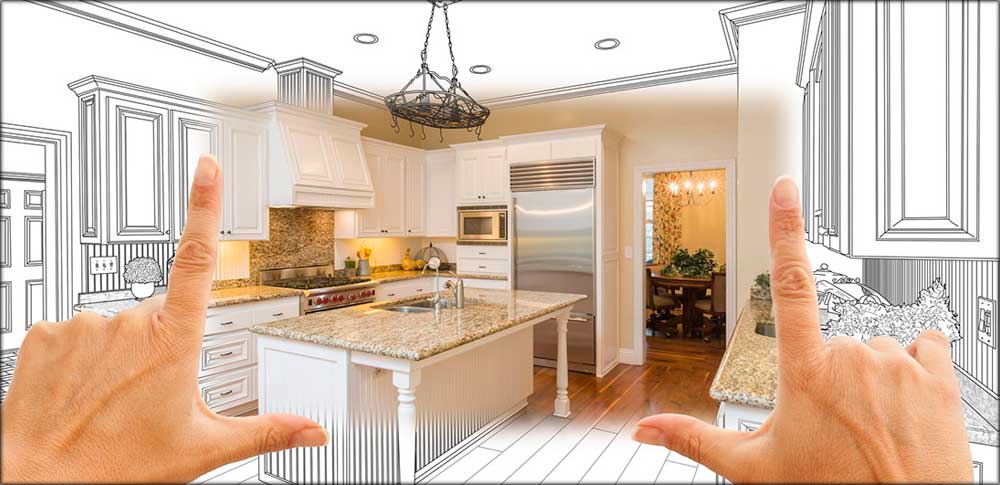PATIENCE IS THE ONLY PART OF THE PROJECT YOU WILL NEED IN BUCKETS
Remodeling even one room can seem like an overwhelming prospect, but tackling multiple rooms or a whole-house remodel requires careful planning, preparation and budgeting. The good news is that you can save a substantial amount of time and money by tackling multiple rooms at the same time. Being able to have labor working on multiple areas of your home at once increases the efficiency of the project and reduces your contractor costs.
Estimating costs on how to remodel a house is a daunting task. There are many factors and multiple variations that contribute to the bottom line of this project, including the size of each room, underlying problems that could arise, the cost of the materials and the extent of the remodel. To give you a good starting point, we’ve gathered information on some of the most popular remodeling projects around your home.
Planning How Extensive Your Renovations Will Be
The amount of work required for your renovations is directly proportional to the cost of the project. Keep in mind that many of your renovations not only add to your ability to enjoy your home, but they also often add resale value and equity. To give you a foundation of what to expect, look at some of the average costs for some of the most popular renovations.
Adding Square Footage/Knocking Down Walls
Removing interior walls and adding square footage are two popular renovations that can make a big difference in how you use your space. Like any project, you can expect to encounter a range of complexity and corresponding prices. For example, knocking down an interior wall costs $300 to $500, with demolition and removal costs factored into the price. Many factors can increase the cost, including:
Load-Bearing Walls: These walls help support the home, which means removing them requires careful planning, often with the guidance of a structural engineer. This also requires additional framing and installing a header beam to replace the support that the wall provides.
Walls with utilities behind them: If the wall you want to remove has plumbing, cooling or heating ducts or electrical wiring, you can expect price increases.
Textured Walls and Ceilings: While tearing out studs typically costs x-dollars per square foot, most experts recommend re-texturing the entire area to match the old and new areas, which costs more than simpler finishing
Got Lead?: Older homes may have lead paint or lath-and-plaster walls, which require longer, more intricate removals that have higher costs.
Adding square footage can cost anywhere from $7,000 to $100,000, with homeowners spending an average of $40,915. Again, this all depends on the extent of the addition and the finishing materials you choose.
Plumbing, Electrical, Structural
The cost of hiring a contractor to remodel a house is one thing, but if you’re changing the layout of your bathroom or knocking down a wall that contains plumbing, you need to hire a plumber, too. Below is a list of the average prices you can expect to pay if you need to have plumbing, electrical or structural work completed:
Plumbers: The average cost of hiring a plumber is $299. Plumbers may charge by the job or by the hour. Average hourly costs range from $95 to $150, although calling a plumber for an emergency or after-hours project typically costs more.
Electricians: The average cost of hiring an electrician is $322. Like plumbers, many electricians charge by the hour. Typical costs range from $120 to $200 per hour, depending on the amount of experience the electrician has and the intricacy of the work you need completed.
Structural Engineers: If you’re planning an addition, changing the stairs or knocking down load-bearing walls, you’d be well-advised to consult with a structural engineer to make sure your plans can be completed safely. Homeowners typically spend $800 to hire a structural engineer, according to the national average.
Permits
Before you begin any remodeling home projects, check with your local authorities to determine the permits required for the work. Most state and local authorities require permits to make sure all the work is done according to building codes. To save time and money, get all the necessary permits before beginning work. The national average cost of getting a building permit for a remodeling project greatly depends on where you are renovating.

